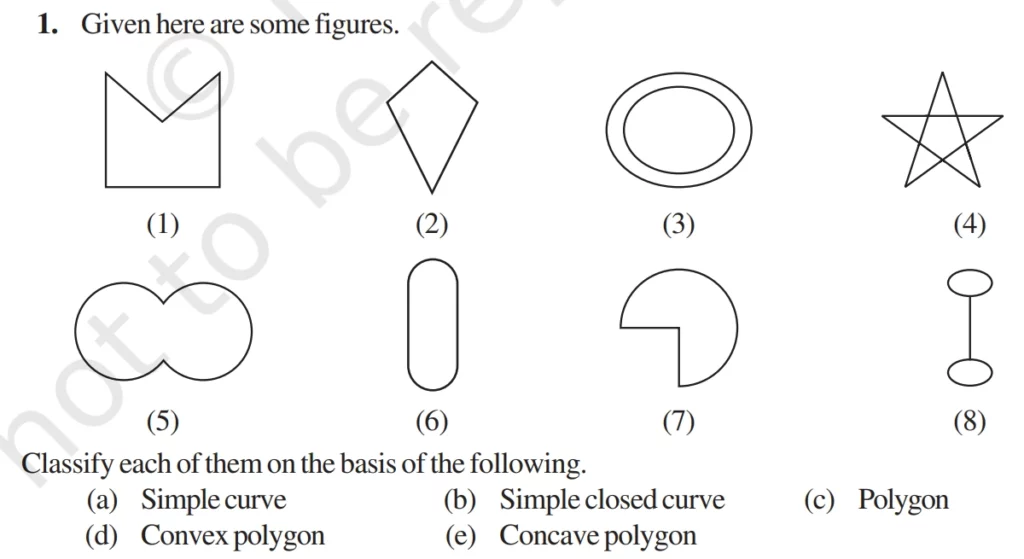NCERT Solutions for Maths Class 8 Chapter 3 Exercise 3.1 – FREE PDF Download
NCERT Class 8 Maths Chapter 3, Understanding Quadrilaterals, delves into the properties and classifications of four-sided figures, such as squares, rectangles, parallelograms, and rhombuses. Exercise 3.1 introduces fundamental polygon concepts, enabling students to recognize and differentiate various quadrilaterals.
Mastering the problems in Exercise 3.1 is essential for building a strong foundation in geometry and tackling more advanced problems effectively. Mathify.in provides NCERT solutions with clear, step-by-step explanations to support students’ learning process.
Important Formulas Used in Class 8 Math Exercise 3.1


Solution:-
(a) Simple Curve
Ans: From the given figures, the figures with simple curves figures are 1, 2, 5, 6, 7
(b) Simple Closed Curve
Ans: From the given figures, the figures with simple curves figures are 1, 2, 5, 6, 7
(c) Polygon
Ans: From the given figures, the figures that are polygons figures are 1, 2
(d) Convex Polygon
Ans: From the given figures, the figures that are convex polygon figure is 2
(e) concave Polygon
Ans: From the given figures, the figures that are concave polygon is figure 1
Explanation:-
What is Plane (simple) Curve
When you join a number of points without lifting a pencil from the paper (and without retracing any portion of the drawing other than single points), you get a plane curve.
In other words, a simple curve that changes direction but does not cross itself while changing direction.
Remember two things to form a simple curve.
Don’t lift the pencil while joining the different point on paper.
Don’t cross and retrace (go back over something) any portion of the drawing other than the single point.
Note:-
(3) is not a simple curve, as there are two circle, to draw a second circle we have to lift the pencel.
(4) is not a simple curve, as the line joining two points are crossing each other.
(8) is not a simple curve, as to draw such figure, one either has to lift the pencil or line joining the points will retrace each other.

Solution:-
A regular polygon is both ‘equiangular’ (all angles equal) and ‘equilateral’ (all sides equal).
In simple words, regular polygon has its all angles equal and all its sides of equal lengths.
For example:- Square, equilateral triangle.
(i) 3 sides regular polygon = Equilateral triangle
(ii) 4 sides regular polygon = Square
(iii) 6 sides regular polygon = Regular Hexagon